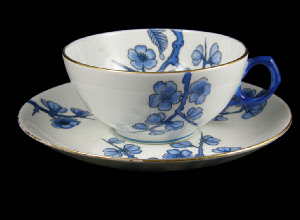
Histories of UK potters and pottery manufacturers

© Michael Perry 2011. Contact
Image courtesy of Lema Publishing Ltd, publishers of ‘Tableware International’ www.tablewareinternational.com
Last updated: 1st August 2011
AESTHETICISM
‘Aestheticism’ was a movement in the arts, literature and decorative arts that emphasised the ideal of beauty in art and society as an end in itself. The Aesthetes believed in beauty in art for its own sake and dismissed the idea that art should have a moral or utilitarian purpose.
The aesthetic movement had its origins in the early 1870s and survived until about the turn of the century. In the United Kingdom it had its greatest impact in the visual arts and the pre-Raphaelite painter Dante Gabriel Rossetti was a leading figure in the movement. In literature, the writer and playwright Oscar Wilde is the best known aesthete, and it was his trial in 1895 (for allegedly indulging in homosexual acts) that is regarded as the end-point of the movement.
Aestheticism was an elitist movement with little impact beyond the arts and literature and thus had only limited impact on the general population. Even so, aesthete symbols and themes appear on ceramics produced by leading manufacturers. Ceramics demonstrating aesthetic style tend to be decorated with Japanese-inspired motifs including sunflowers, chrysanthemums, magnolia, hawthorn blossom and the peacock. Blue and white were the favoured colours.
Blue and white teaware with hand-painted Prunus blossom characteristic of the aesthetic movement
George Jones & Sons Ltd, 1880s
Aesthetic themes on a Ridgways plate - magnolia blossom, peacock, bamboo, and sunflowers are visible.
Ridgways, 1880s
Teaware embossed and hand painted with ‘bamboo’ decoration drawn from Japanese originals
Cauldon Ltd, 1890s



